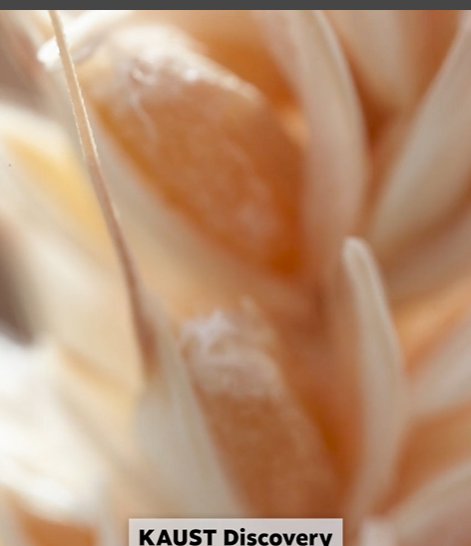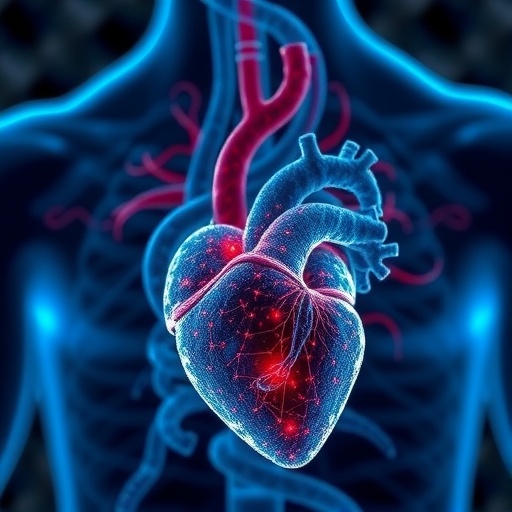Researchers have cloned the wheat rust resistance genes Lr9 and Sr43 and identified that they encode unusual kinase fusion proteins[1][2]. Their research will enable new options for addressing resistance to disease in bread wheat.

Credit: © 2023 KAUST; Anastasia Serin.
Researchers have cloned the wheat rust resistance genes Lr9 and Sr43 and identified that they encode unusual kinase fusion proteins[1][2]. Their research will enable new options for addressing resistance to disease in bread wheat.
Each year about 20 percent of global wheat production is lost to pests and disease, the equivalent of 3,500 grain ships. Breeding resistant cultivars is one of the most economical and environmentally friendly ways to address the problem.
The wild relatives of wheat provide a reservoir of genetic diversity for crop improvement. The Lr9 leaf rust resistance gene, for example, was originally identified in a wild goatgrass (Aegilops umbellulata). In a pioneering experiment conducted in the 1950s, Dr Ernest Sears succeeded in transferring a tiny Lr9-carrying segment of an Aegilops chromosome into bread wheat, demonstrating that it is possible to stably cross small chromosome segments from distant wild relatives.
Nearly 40 percent of the resistance genes found in bread wheat today have been crossed into wheat from wild relatives over the last 60 years. Wheat cultivars carrying Lr9 were released in the late 1960s, and Lr9 is still effective in many wheat growing areas. However, this type of breeding can lead to co-introduction of unfavorable versions of other genes from the wild relative, known as “linkage drag.”
KAUST researcher Yajun Wang used long-read sequencing to sequence the genomes of an Lr9-containing bread wheat cultivar and Ae. umbellulata. Comparison of the two genomes allowed the full reconstruction of this historic translocation. “We found that Lr9 had been introduced into wheat along with about 536 other genes from Aegilops umbellulata. Moreover, the process led to the deletion of a small fragment of the wheat genome containing 87 genes,” says Wang.
Similar to Lr9, the stem rust resistance gene Sr43 came from the wild tall wheatgrass (Thinopyrum elongatum).
Two teams led by Simon Krattinger and Brande Wulff cloned Lr9 and Sr43, respectively, by generating mutants and comparing their sequence to the parent genomes.
“The cloned genes can now be used to engineer bread wheat lines without linkage drag. More importantly, the genes can be combined with other cloned rust resistance genes into multigene stacks to create lines with superior and more durable resistance,” says Guotai Yu, lead researcher on the Sr43 project.
To clone Lr9, Wang developed a novel method called MutIsoSeq based on sequencing mRNA rather than genomic DNA. It combines long-read sequencing of mRNA from wild-type parental lines and short-read mRNA sequencing of mutant plants to identify candidate genes. Compared to other gene-cloning methods based on DNA sequencing, MutIsoSeq allows cheaper and faster cloning of causal genes without tedious genetic mapping, and the method can be easily applied in any basic molecular biology lab.
The cloning of Lr9 and Sr43 also revealed that the genes encode unusual kinase fusion proteins. Wheat kinases have recently emerged as a prominent new player involved in disease resistance in wheat and barley. The researchers combined large-scale mutational analysis and AlphaFold protein modeling to interpret the protein function.
“A kinase is a common enzyme that plays important roles in many cellular processes in both plants and animals, including in immunity,” says Krattinger.
“Pathogens secrete proteins that sabotage host processes, subverting the host and causing disease. Our work suggests that the fusion of these proteins to kinases may allow the host to more easily detect the presence of pathogens and trigger defense responses,” he adds.
A peculiar feature of the Sr43 gene is that it does not provide good resistance at elevated temperatures.
“Having cloned Sr43, we can now start to unravel the molecular mechanism of its temperature sensitivity. This may allow us to engineer a heat resistant version that would be better adapted to climate change,” says Wulff.
Journal
Nature Genetics
DOI
10.1038/s41588-023-01402-1
Article Title
The wheat stem rust resistance gene Sr43 encodes an unusual protein kinase.
Article Publication Date
22-May-2023




